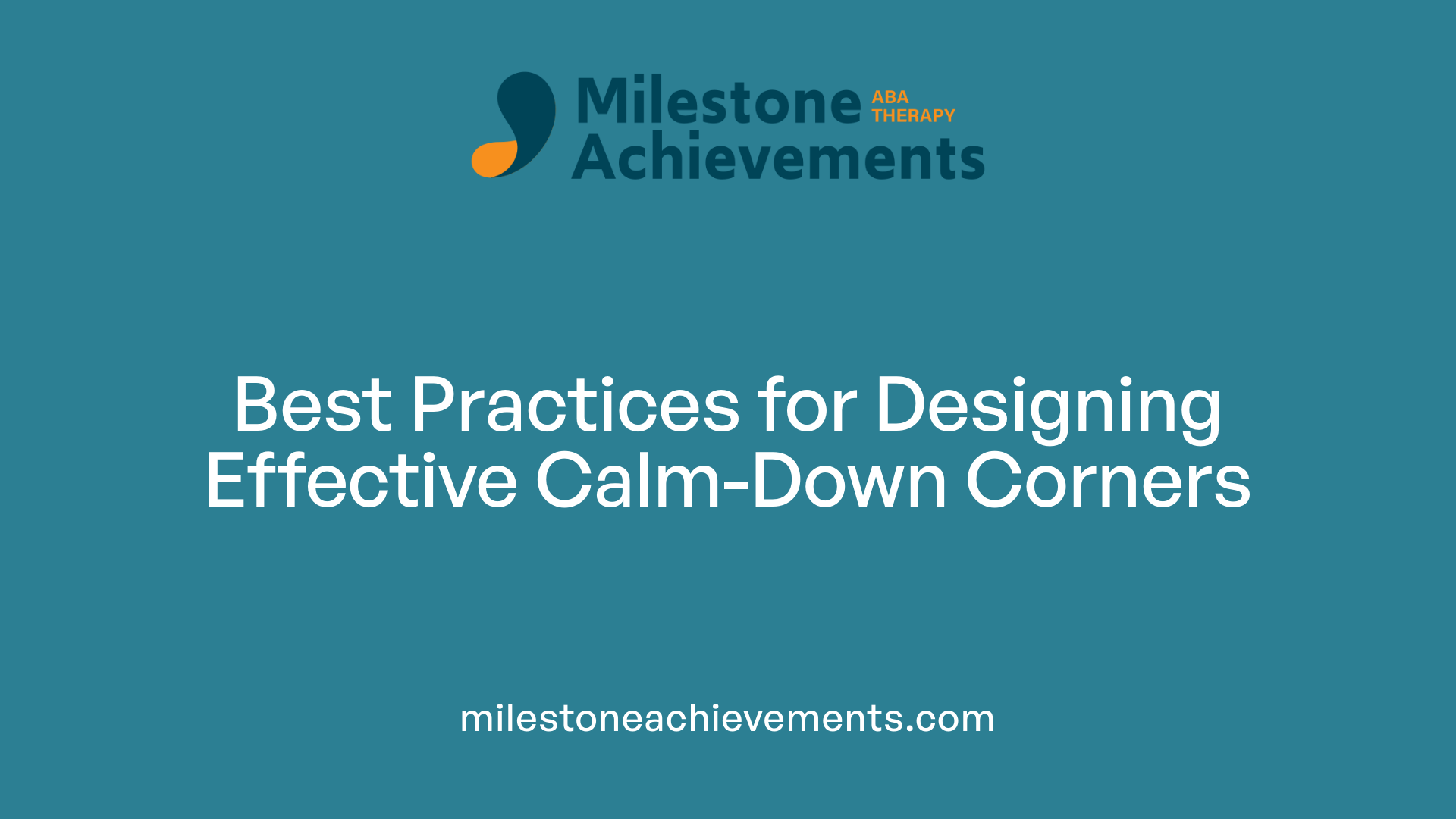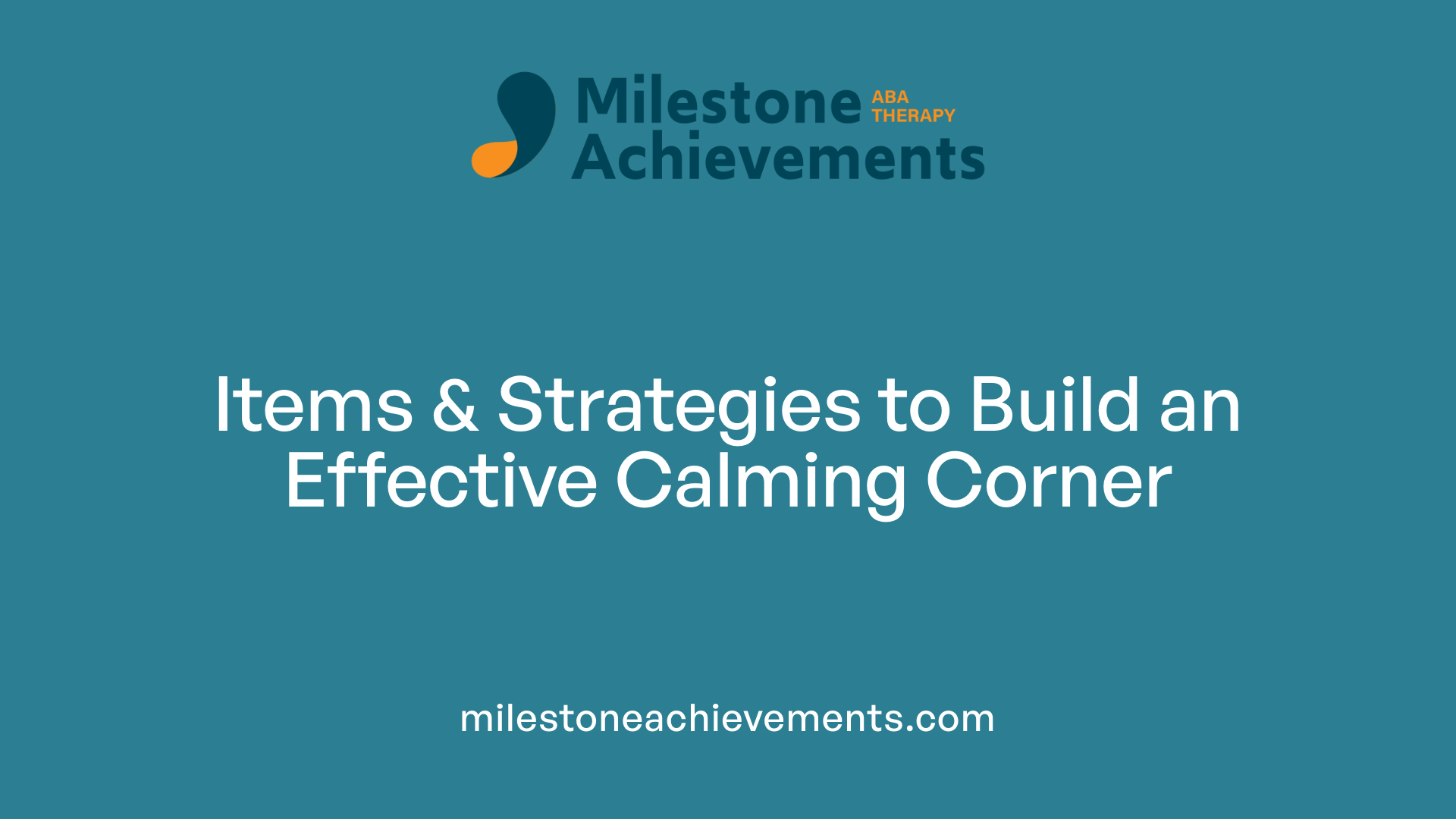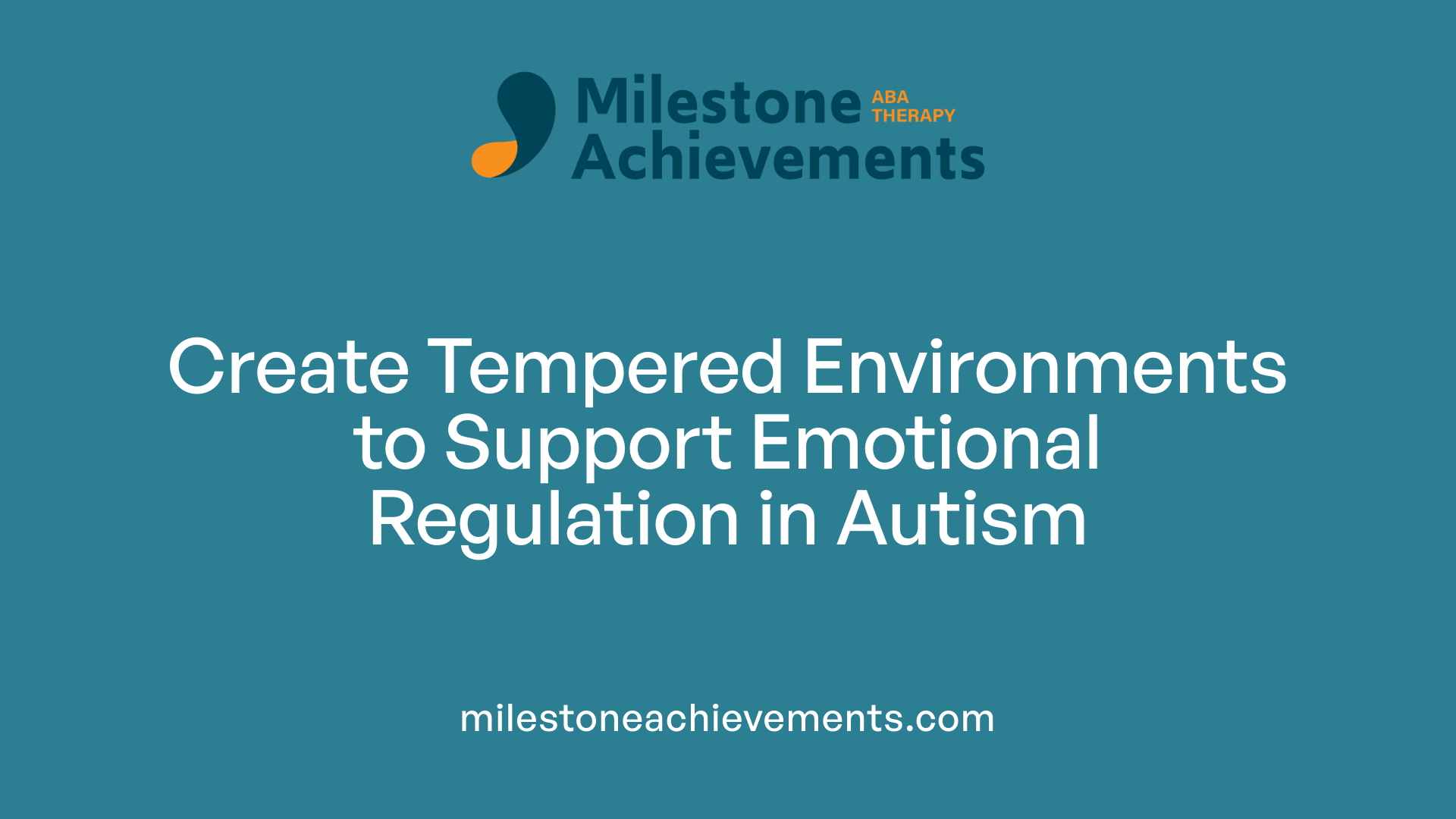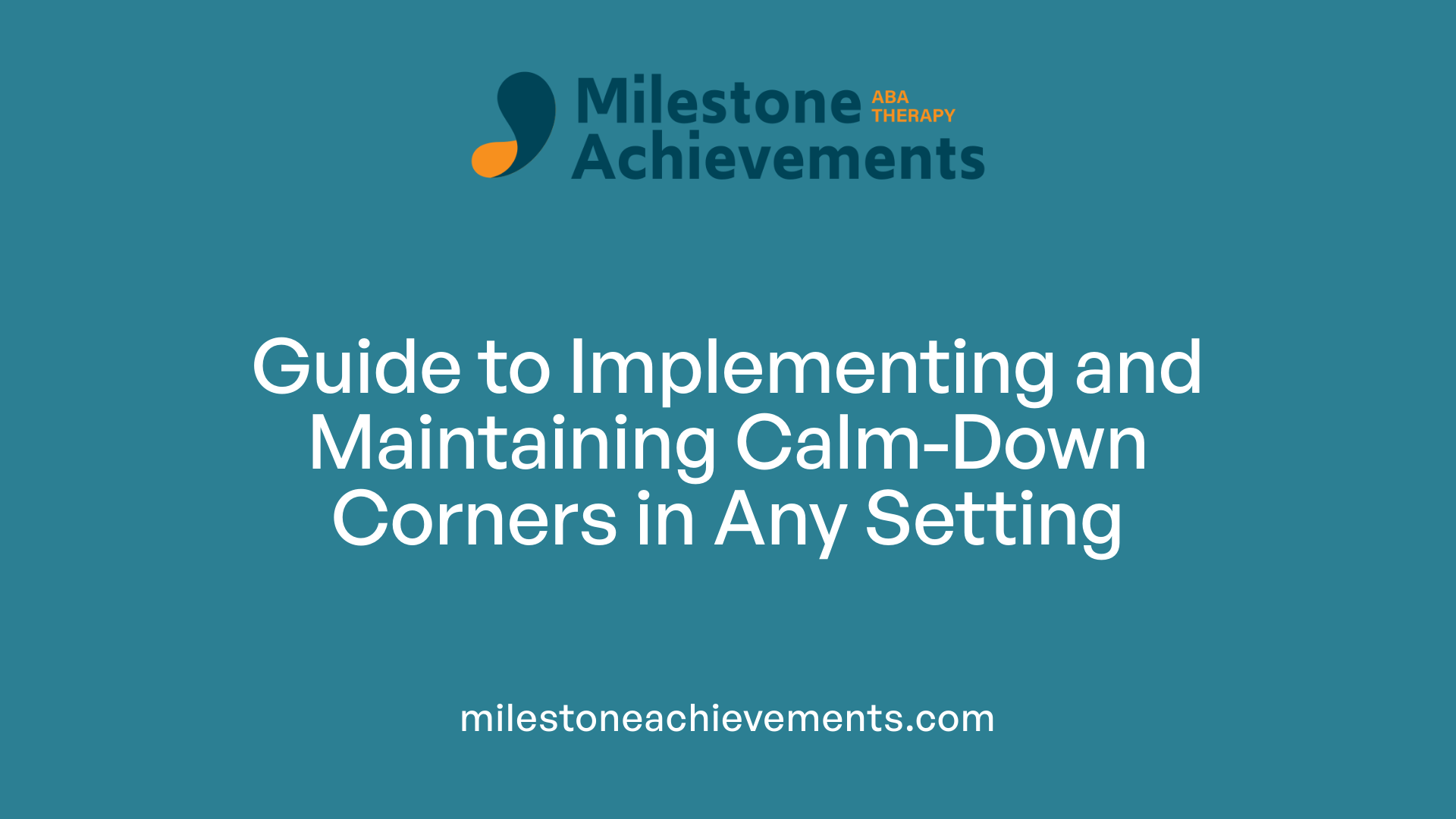
Creating Calm-Down Corners for Autism
Building Safe Havens: Essential Strategies for Calm-Down Corners
Understanding the Importance of Calming Spaces for Children with Autism
Calm-down corners serve as vital tools for supporting children with autism in managing over-stimulation, emotional overwhelm, and challenging behaviors. These spaces offer a dedicated environment where children can self-regulate, relax, and regain composure without being punitive or isolating. Properly designed, implemented, and maintained, calming corners can significantly enhance emotional resilience and self-management skills, fostering a more inclusive and supportive learning or home environment.
Designing Effective Calm-Down Corners: Best Practices

What are some best practices for setting up effective calm-down corners?
Creating a successful calm-down corner involves careful planning and thoughtful organization. The space should be safe, inviting, and free from clutter to promote relaxation. Start by choosing a quiet corner of the classroom or home that offers privacy and minimal distractions.
Incorporate calming elements such as soft furnishings like cushions, bean bags, or rugs to make the space cozy. Sensory tools are also essential; items like weighted stuffed animals, fidget sets, jellyfish lamps, and sound sponge dividers help soothe sensory overload. Visual aids such as calm-down charts, timers, or visual menus support self-regulation and provide clear cues.
Teaching students how to use the space is crucial. This includes demonstrating coping strategies like deep breathing, mindfulness exercises, or using calming tools. Involving students in selecting items and establishing rules fosters ownership and encourages respectful use of the area.
Consistency is key. Teachers and caregivers should model calm-down techniques and reinforce positive behavior when students use the space appropriately. Reflection tools such as timers and reflection sheets can help students understand their progress and develop independence.
Funding and community support can improve access to quality materials and expand the resources available. Overall, a calm-down corner should be a positive, non-punitive environment dedicated to helping students manage their emotions effectively within a nurturing, trauma-informed approach.
Items and Strategies for Designing a Calming Corner
 When creating a calming corner for children with autism, the focus should be on making the space safe, soothing, and easy to navigate. Soft furnishings are essential to promote comfort and relaxation. These include plush cushions, bean bags, soft rugs, and cozy blankets that invite children to settle in without feeling confined.
When creating a calming corner for children with autism, the focus should be on making the space safe, soothing, and easy to navigate. Soft furnishings are essential to promote comfort and relaxation. These include plush cushions, bean bags, soft rugs, and cozy blankets that invite children to settle in without feeling confined.
Sensory tools play a pivotal role in helping children self-regulate. Items such as fidget toys, stress balls, tactile objects like textured fabrics, and sensory bottles filled with liquid or glitter offer calming sensory input. These tools should be easily accessible in the corner to encourage independent use.
Visual supports can greatly enhance the effectiveness of the calming space. Coping strategy charts, feeling or emotion cards, and visual timers help children understand when and how to use the space properly. Visual cues create a predictable environment that fosters safety and encourages self-awareness.
Incorporating calming activities can further soothe and engage children. Listening to gentle music, practicing deep breathing or progressive muscle relaxation, coloring in calming-themed books, or reading aloud can foster a sense of peace and mindfulness.
Proper organization of the calming corner supports independence and consistent use. Clear labels, neatly arranged sensory tools, and designated areas for activities help children learn to use the space effectively. Setting clear rules—such as limiting the time spent in the corner and using quiet voices—maintains its purpose as a calming refuge.
Overall, a well-designed calming corner combines comfort, sensory input, visual guidance, and calming activities. This holistic setup empowers children to regulate their emotions independently and prepares them to return to learning with a calmer, more focused mindset.
Supporting Emotional Regulation in Autism Through Calming Spaces

How can calming spaces support individuals with autism in managing emotions?
Calming environments are designed to create sensory-friendly atmospheres that assist individuals with autism in handling their emotions more effectively. These spaces are tailored to reduce sensory overload and stress, which are common triggers for emotional outbursts or meltdowns.
Features like soft cushions, textured toys, calming lights such as jellyfish lamps, and tools like weighted blankets or fidget sets help individuals self-soothe and regain control of their emotions. For example, weighted stuffed animals or vibrating massage pillows can provide deep pressure therapy, which is calming for many autistic individuals.
Calming spaces also serve as safe zones where children and adults can recognize and understand their feelings. By offering a dedicated area to pause and reflect, these spaces promote emotional awareness and self-regulation skills.
In educational and home settings, designated calming corners or sensory rooms contain visual and tactile stimuli that aid in relaxation. Items such as ooze tubes, sand panels, or soft lighting create a tranquil environment conducive to mindfulness and self-reflection.
The benefits of these spaces extend beyond immediate stress relief. Regular use encourages independence by promoting self-awareness and emotional resilience. Users learn to prompt themselves to employ calming techniques, fostering skills that contribute to long-term emotional well-being.
Whether in classrooms or at home, the creation of a calming area empowers individuals with autism to manage their emotions better, leading to improved behavior and a greater sense of safety and control. As a result, these environments are vital tools in supporting emotional development and overall quality of life.
Creating Sensory-Friendly Calming Environments
What are some ideas for creating sensory-friendly calming environments?
Creating a calming space that caters to sensory needs can significantly benefit children and adults with autism, sensory processing disorder, ADHD, or anxiety. Implementing various sensory-friendly elements helps in lowering overstimulation and promoting a sense of safety.
One effective way to foster a relaxing environment is to incorporate soft lighting. Using dimmers or color-changing lights can adjust the ambiance to be gentle and welcoming. Natural light or warm, soft artificial light can help reduce harsh glare and create a cozy setting.
Sound also plays a crucial role. Including calming sounds, such as gentle music or nature noises, can soothe the mind and body. Music therapy or white noise machines are popular options. These sounds help drown out chaotic background noise and create a peaceful atmosphere.
Sensory tools are essential for providing calming input. Items like weighted blankets, tactile toys, and sensory bins filled with different textures can engage the senses in a controlled way. These tools assist in sensory regulation and help individuals feel grounded.
Designating quiet zones within a space is another key aspect. These areas should have soft, comfortable seating like bean bags, cushions, or cozy chairs. Adding gentle visual stimuli—such as calming images or soft fabrics—enhances the soothing environment.
Movement opportunities are also beneficial. Incorporate outdoor swings, rocking chairs, or mini-trampolines, which help in regulating vestibular input. Gentle movement activities can calm overstimulated bodies and promote balance.
For safety and effective use, choose age-appropriate, soft-edged furniture that’s secure. Organize sensory items thoughtfully, rotating them regularly to prevent overload while keeping the environment engaging.
By thoughtfully combining lighting, sound, tactile items, designated quiet spaces, and movement options, you can craft a sensory-friendly atmosphere that helps individuals manage overstimulation and fosters emotional and sensory regulation.
Implementing and Maintaining Calm-Down Corners for Home, School, and Community

How can parents and educators implement calm-down corners at home, school, or other settings?
Creating an effective calming space involves selecting a quiet, comfortable spot away from noisy or busy areas. In homes and classrooms, this space should be physically defined and cozy, with soft furnishings like cushions, bean bags, or plush toys that invite relaxation.
Equipping the area with sensory tools enhances its calming effect. Items such as weighted blankets, stress balls, tactile toys, and visual aids like lava lamps or bubble tubes are popular choices. These tools help children engage their senses and promote regulation.
Pre-teaching children how to use the space is crucial. Educators and parents should explain its purpose during calm moments, modeling calm behaviors, and setting clear guidelines. For example, children should understand that the calm-down corner is not a punishment but a safe place to regulate emotions.
Guidelines may include using a quiet voice, limiting the time (often around 2-5 minutes), and respecting peers' privacy in the space. Visual timers and pictorial routines can help children understand how long they should stay.
The calming area can include practical tools like timers for time management, deep breathing prompts, or visual schedules to guide the child's activities. Incorporating personal items or interests into the space can make it more inviting and tailored to individual needs.
Regular routines that incorporate the use of the calm-down corner help children develop proactive regulation habits. Encouraging children to use the space before frustration escalates supports emotional safety and positive behavior. Overall, consistent practice and personalization are essential to effective implementation.
Calming Corners as a Preventative and Supportive Tool for Challenging Behaviors

How can calming corners help manage challenging behaviors such as head-banging?
Calming corners serve as a strategic space designed to de-escalate behaviors like head-banging by providing a safe, supervised environment where children can self-regulate. These spaces are thoughtfully equipped with various sensory tools and comfort items that address individual sensory needs, which can be either underwhelming or overwhelming.
Inside a calming corner, children might find soft plush toys, noise-canceling headphones, calming visual stimuli such as lava lamps or bubble tubes, and tactile objects like stress balls or textured fabrics. These tools encourage self-soothing and help children regain control over their emotions before behaviors escalate further.
By offering such supportive options, calming corners help reduce the likelihood of injury and emotional distress. They promote a sense of security and autonomy, empowering children to manage their stress responses independently. This proactive approach not only helps in immediate behavior management but also teaches children coping skills that benefit them long-term.
Importantly, the success of calming corners is enhanced when combined with individualized strategies, such as tailored sensory activities, clear rules for use, and guidance from professionals familiar with each child's unique needs. These considerations ensure that the calming space remains an effective part of a comprehensive behavioral support plan, fostering emotional regulation and reducing instances of challenging behaviors.
In sum, calming corners act as a critical tool in managing difficult behaviors like head-banging by providing a controlled, soothing environment. They help children learn to self-calm, prevent injury, and develop essential coping mechanisms, all while supporting broader behavioral and emotional goals.
Empowering Emotional Well-being Through Thoughtful Design
Creating effective calm-down corners requires a thoughtful approach that integrates comfort, sensory considerations, and clear guidance. When properly implemented, these spaces act as empowering tools that support emotional regulation, reduce challenging behaviors, and foster independence. By involving children in the design process, utilizing specific items, and applying best practices, caregivers and educators can develop calming environments that are both functional and inviting. Ultimately, these spaces contribute significantly to the overall well-being and development of children with autism, promoting a sense of safety, self-control, and resilience in various settings.
References
- How to Create a Calming Area - National Autism Resources
- Creating a “Calm Down Corner” for Your Child
- Calm down corner | ProTeacher Community
- How to Use a Calming Corner - The Autism Helper
- How to Create a Calming Corner at Home
- The Classroom Calming Corner - Watson Institute
- [PDF] Creating a Calm Zone at home - Severe Learning Disability
- Autism Head Banging: Tips and Effective Solutions


Partner with us on your child's journey
Milestone Achievements offers evidence-based ABA therapy to help children with autism reach their full potential. Together we’ll set meaningful goals and celebrate progress every step of the way.
Start ABA Services Today


